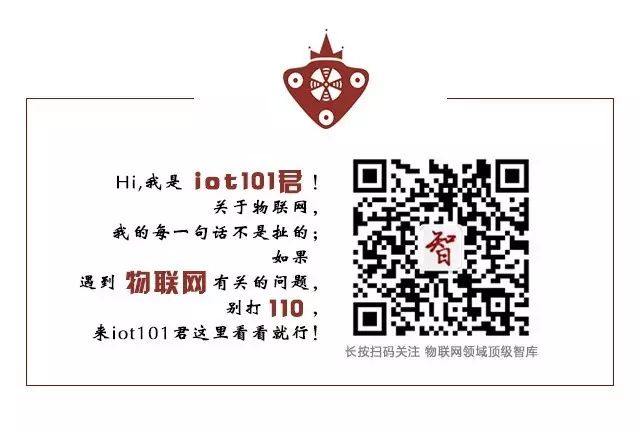
Source: IoT Jianghu (iot521)
Author: Wang Yiming
IoT Think Tank Reprint
Please indicate the source and origin when reprinting
—— [Introduction] ——
The Development History and Technical Characteristics of NB-IoT
1. Differentiated Demand in the Internet of Things
For a long time, people have used network services through corresponding terminals (computers, mobile phones, tablets, etc.), with “individuals” being the main users of the network. Individuals have high and uniform requirements for network quality: online gaming requires low latency, downloading files or watching online videos expects high bandwidth, calls need clear sound, and received messages must not be missed.
For mobile communication networks, operators strive to maintain low latency, high bandwidth, wide coverage, and on-demand network characteristics to ensure a good user experience and create a rich mobile application ecosystem.
In personal communication services, although user demands are high, the overall demand for network quality is consistent. Operators only need to establish a network quality standard system to build and optimize the network to meet most people’s connection needs.
As the growth in the number of user terminals (phones, tablets, etc.) in networks gradually slows, M2M applications have become a growth point for operators’ network business, with a large number of M2M application terminals becoming users of the network. M2M application terminals (sensing devices, smart terminals) are essentially IoT terminals. They connect to the operator’s network by equipping wireless communication modules and SIM cards, thus building various centralized, digital industry applications.
Unlike personal communication services, the quality requirements for information collection, transmission, and computation vary greatly across different fields in industry applications built on IoT terminals; the deployment environments of systems and terminals also vary widely, especially in diverse industrial environments. Furthermore, when enterprises build applications, they must also consider technical limitations (power supply issues, terminal size, etc.) and cost control (including construction costs and operating costs). Therefore, the diverse industry applications have a “personalized” aspect, causing the demand for connections to evolve towards diversity.
1. Differentiated Demand for IoT Services is Reflected in Two Aspects
On one hand, different terminals and applications have different requirements for network characteristics. Traditional network characteristics include: the distance of network access, uplink and downlink network bandwidth, support for mobility, data transmission frequency (or periodicity), as well as security and data transmission quality (integrity, stability, timeliness, etc.). These aspects can be condensed into three aspects: “access distance,” “network characteristics,” and “network quality.” “Access distance” is mainly divided into near access and far access. The “characteristics” and “quality” of the network are the main factors reflecting demand differentiation; for example, the “network characteristics” of sensor terminals may be: only “uplink data” sent to the cloud, with no “downlink data” received.
On the other hand, the network also needs to “take care of” the terminal characteristics that were previously not much focused on, to meet various industry application needs: control over “energy consumption” and “cost.”
(1) Energy Consumption
Most personal users are in livable environments most of the time, with smart terminals nearby, and they can always find a “power outlet” in human activity environments, so manufacturers of these terminals are not sensitive to battery power.
However, the working environment of IoT terminals is much more complex compared to personal terminals. Some IoT terminals may be deployed in high-temperature and high-pressure industrial environments, while others may be far from cities, placed in remote areas where human presence is rare, and some may even be deeply embedded underground or located in streams and lakes.
Many devices require long-term battery power to operate, as their geographical location and working environment cannot provide external power; the cost of replacing batteries is also exceptionally high. Therefore, “low power consumption” is a key demand to ensure their continuous operation. In many application scenarios, a small battery’s power needs to sustain a terminal’s “lifetime” energy supply.
(2) Cost
For personal terminals, whether computers or mobile phones, they are rich in functions, have powerful computing capabilities, and are widely used. The communication module is just a small part of all electronic components and mechanical constructions, accounting for a low proportion of the total manufacturing cost.
As higher-value products, users and manufacturers are not particularly sensitive to the fixed costs of their communication units. However, IoT terminals are different; many terminals without networking capabilities are originally simple sensing devices with simple functions and low costs. The inclusion of a relatively expensive communication module can significantly increase costs.
In application scenarios where numerous connected sensing devices are deployed, enterprises often need to make a decisive investment in terminal costs. However, the contradiction is that the amount of data uploaded by simple sensor terminals is usually very small; their connection to the network is infrequent (low usage frequency); the value of each piece of uploaded information is low. The disproportionate relationship between terminal costs and information value makes enterprises hesitant in their decisions to deploy numerous IoT terminals. Reducing the communication costs of these dumb terminals (single sensing terminals) is an urgent problem.
The previously mentioned energy consumption issue, if not properly addressed, can also affect the operating costs of IoT applications: if terminals consume power too quickly, they will need to be redeployed or have their batteries replaced continuously.
2. Low Power Consumption and Low Cost are Major Demands for IoT Communication
The original network is not sensitive to applications; as long as it provides a unified high-quality network channel (only one standard), it can meet the needs of most users. Regardless of what kind of services users prefer to use, they can obtain communication services through high-quality network quality, and the network can meet most of the requirements of individual users.
However, as industry applications deepen, network designers and builders must pay attention to the differences in applications and terminals, meaning that the network needs to make corresponding adjustments and adaptations for terminals and applications.
In the previously mentioned network characteristics and terminal characteristics: “distance, quality, characteristics” and “energy consumption, cost,” there is a close relationship between the two categories of characteristics: the wider the signal coverage of the communication base station (“long distance”), the higher the power consumption of the base station and terminal (“high energy consumption”); to achieve high-quality, safe, and reliable network services (“high quality”), robust communication protocols are needed to implement error verification, identity verification, and retransmission mechanisms to establish reliable end-to-end connections, which fundamentally requires that the configuration of communication modules cannot be low (“high cost”).
2. The Development History of NB-IoT
When operators promoted M2M services (IoT applications), they found that enterprises’ business needs for M2M differ from those of individual users. Enterprises hope to build centralized information systems to establish long-term communication connections with their assets for management and monitoring.
These assets are often distributed across various locations and in large quantities; the communication devices equipped on the assets may not have external power conditions (i.e., powered by batteries, which may be disposable, unable to be charged or replaced); the amount of data that a single sensing terminal needs to report is small, and the cycle is long; enterprises need low communication costs (including communication fees and the cost of assembling communication modules).
This type of application scenario has strong uniformity at the network level, so organizations and enterprises in the communication field hope to optimize existing communication network technology standards in a series of ways to meet the consistent needs of such M2M businesses.
In 2013, Vodafone and Huawei began research on a new communication standard, initially referring to this communication technology as “NB-M2M (LTE for Machine to Machine).”
In May 2014, the 3GPP GERAN group established a new research project: “FS_IoT_LC,” which mainly studies new types of radio access network systems, with “NB-M2M” becoming one of the research directions of the project. Shortly afterward, Qualcomm submitted the “NB-OFDM” (Narrow Band Orthogonal Frequency Division Multiplexing) technical proposal.
(3GPP, “3rd Generation Partnership Project” standardization organization; TSG-GERAN (GSM/EDGE Radio Access Network): responsible for formulating GSM/EDGE radio access network technology specifications)
In May 2015, the “NB-M2M” scheme and the “NB-OFDM scheme” merged to become “NB-CIoT” (Narrow Band Cellular IoT). The main merging point of the scheme was that the communication uplink adopted FDMA multiple access, while the downlink adopted OFDM multiple access.
In July 2015, Ericsson, together with ZTE, Nokia, and other companies, proposed the “NB-LTE” (Narrow Band LTE) technical scheme.
In September 2015, at the RAN#69 plenary meeting, after intense discussions and negotiations, the leaders of the two technical schemes (“NB-CIoT,” “NB-LTE”) merged, and 3GPP initiated work on the unified standard. This standard, as a unified international standard, is referred to as “NB-IoT (Narrow Band Internet of Things).” Since then, “NB-M2M,” “NB-OFDM,” “NB-CIoT,” and “NB-LTE” have all become history.
In June 2016, the core standard of NB-IoT was frozen as a dedicated protocol for the Internet of Things in 3GPP Rel-13. In September of the same year, the standard for the performance part of NB-IoT was completed. In January 2017, the standard for the consistency testing part of NB-IoT was completed.
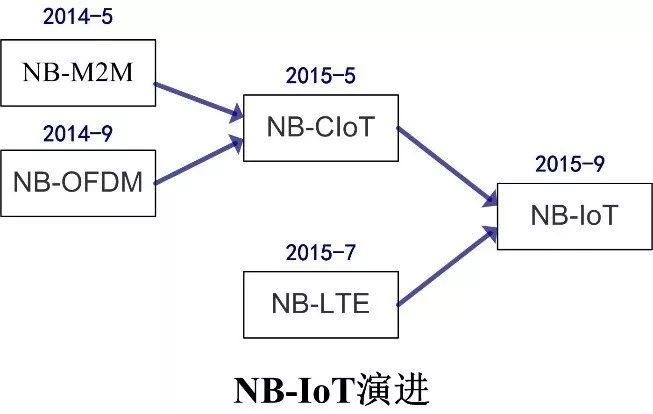
In my opinion, the key to promoting the alliance of these low-power cellular technologies is not only the growing business demands but also the threat from other emerging (unlicensed band) low-power access technologies. The emergence of new access technologies like LoRa, SIGFOX, RPMA, etc., has prompted relevant member companies and organizations within 3GPP to develop together.
3. The Development History of NB-IoT
Like its competitors, NB-IoT focuses on low-power, wide-area communication applications. The communication mechanism of terminals is relatively simple, and the power consumption of wireless communication is relatively low, suitable for small data volumes and low frequency (low throughput) information uploads, with signal coverage similar to that of ordinary mobile network technologies. This type of technology is collectively referred to as “LPWAN technology” (Low Power Wide Area).
NB-IoT has technically optimized the original 4G network for M2M communication scenarios, appropriately balancing network characteristics and terminal characteristics to meet the needs of IoT applications.
In terms of “distance, quality, characteristics” and “energy consumption, cost,” ensuring wide-area coverage in “distance” somewhat reduces “quality” (for example, adopting a half-duplex communication mode, not supporting high-bandwidth data transmission), and reduces “characteristics” (for example, not supporting handover, i.e., mobility management in connection state).
The benefit of “shrinking” network characteristics is that it also reduces the communication “energy consumption” of terminals and can lower “cost” by simplifying the complexity of communication modules (for example, simplifying the processing algorithms of the communication link layer).
Thus, to meet the individual requirements of some IoT terminals (low energy consumption, low cost), the network made a “compromise.” NB-IoT “sacrificed” some network characteristics to satisfy the different application needs in the IoT.
1. Deployment Methods
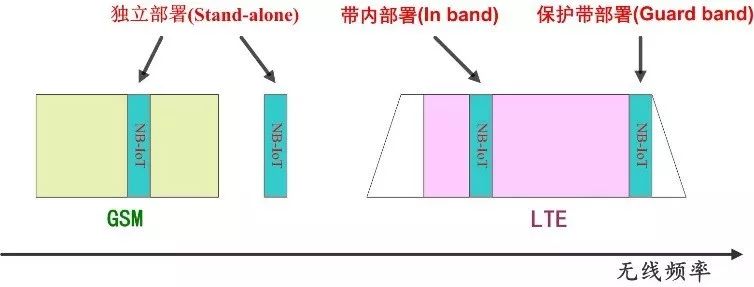
To facilitate operators’ flexible use based on free network conditions, NB-IoT can be deployed in different wireless frequency bands, divided into three situations: standalone deployment, guard band deployment, and in-band deployment.
Standalone mode: Deploying using an independent new frequency band or idle frequency band; the operator’s “GSM frequency band reallocation” also belongs to this mode;
Guard band mode: Utilizing the edge protection frequency band in the LTE system. Adopting this mode requires meeting some additional technical requirements (for example, the original LTE frequency band width must be greater than 5Mbit/s) to avoid signal interference between LTE and NB-IoT.
In-band mode: Utilizing a certain segment of frequency in the middle of the LTE carrier. To avoid interference, 3GPP requires that the signal power spectral density in this mode does not exceed 6dB compared to the LTE signal’s power spectral density.
Besides the standalone mode, the other two deployment modes need to consider compatibility with the original LTE system, making the deployment technically more challenging and the network capacity relatively lower.
2. Coverage Enhancement
To enhance signal coverage, in the downlink wireless channel of NB-IoT, the network system improves data communication quality by repeatedly sending control and service messages to terminals (“retransmission mechanism”), which the terminals then merge the repeated received data.
This approach can increase the range of signal coverage, but data retransmission will inevitably lead to increased latency, thereby affecting the timeliness of information transmission. In areas with weak signal coverage, while NB-IoT can ensure connectivity between the network and the terminal, it cannot guarantee some services with high real-time requirements.
In the uplink channel of NB-IoT, data retransmission is also supported on the wireless channel. Furthermore, terminal signals are sent in narrower LTE bandwidth, enhancing signal strength per unit spectrum, thus increasing PSD (Power Spectrum Density) gain. By increasing power spectral density, it is more conducive to the network receiving end’s signal demodulation, enhancing the uplink wireless signal’s penetration capability.
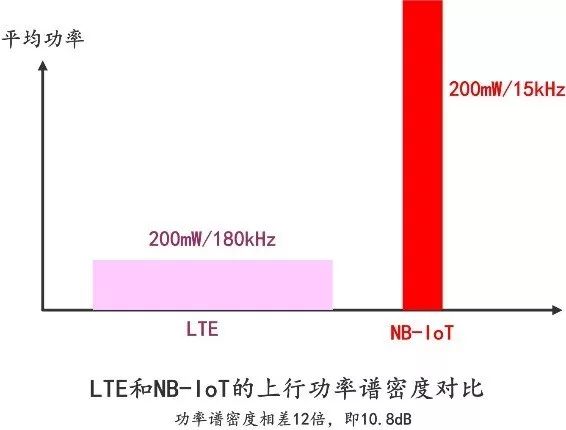
Through the optimization design of the uplink and downlink channels, the “coupling loss” of NB-IoT signals can reach a maximum of 164dB.
(Note: Coupling loss refers to the energy loss that occurs when energy propagates from one circuit system to another. Here it refers to the energy loss of wireless signals while propagating through the air.)
To further utilize the signal coverage capability of the network system, NB-IoT also graded the signal coverage strength (CE Level) and realized “paging optimization”: introducing PTW (Paging Transmission Window), allowing the network to page the UE multiple times within a PTW and adjusting the paging frequency based on the coverage level.
Normal Coverage, with MCL (Maximum Coupling Loss) less than 144dB, consistent with current GPRS coverage.
Extended Coverage, with MCL between 144dB and 154dB, providing a 10dB enhancement over GPRS coverage.
Extreme Coverage, with MCL up to 164dB, providing a 20dB increase in strength compared to GPRS coverage.
3. Achieving Low Power Consumption in NB-IoT
To enable low power operation of terminal communication modules, the best way is to keep them in “sleep” mode as much as possible. NB-IoT has two modes that allow the communication module to listen for network paging only during a very short agreed period, while being off at all other times. These two “power-saving” modes are: PSM (Power Saving Mode) and eDRX (Extended Discontinuous Reception).
(1) PSM Mode
In PSM mode, after the terminal device’s communication module has been idle for a period, it will turn off its signal transmission and reception as well as related access layer functions. When the device is in this partial shutdown state, it enters the power-saving mode – PSM. This allows the terminal to reduce energy consumption of communication components (antenna, RF, etc.).
During the PSM mode, the network cannot access the terminal. From the perspective of voice calls, it is “unable to be called.”
In most cases, terminals using PSM remain in sleep mode over 99% of the time. There are mainly two ways to activate their communication with the network:
When the terminal needs to connect to the network, it will exit the PSM state and actively communicate with the network to upload business data.
In each periodic TAU (Tracking Area Update), there is a short period where the terminal is active. During this active state, the terminal enters the “connected state” to interact with the network for its network and business data. After communication is completed, the terminal does not immediately enter PSM but maintains an “idle state” for a while. In the idle state, the terminal can receive the network’s paging.
In the PSM operating mechanism, the “active timer (AT)” controls the duration of the idle state, which is negotiated between the network and the terminal during network attachment (Attach) or TAU. When the AT times out in the idle state, the terminal enters PSM mode.
According to the standards, the maximum TAU cycle for a terminal can reach 310H (hours); the maximum duration for the “idle state” can reach 3.1 hours (11160s).
From a technical principle perspective, PSM is suitable for applications with almost no downlink data flow. The interaction between cloud applications and terminals mainly relies on the terminal’s autonomy to contact the network. In most cases, cloud applications cannot “contact” the terminal in real-time.
(2) eDRX Mode
In eDRX mode, the network can only page the terminal during the initial time of each TAU (paging during the idle state after the connected state). The operation of eDRX mode differs from PSM; it introduces the eDRX mechanism to enhance the accessibility of business downlink.
(Note: DRX (Discontinuous Reception) refers to discontinuous reception. eDRX is extended discontinuous reception.)
eDRX mode includes multiple eDRX cycles within a TAU to facilitate the network’s more real-time establishment of communication connections (paging).
One TAU in eDRX includes a connected state cycle and an idle state cycle, with the idle state cycle containing multiple eDRX paging cycles, each of which includes a PTW cycle and a PSM cycle. The PTW and PSM states periodically alternate within a TAU, allowing the terminal to be intermittently in standby mode, waiting for the network’s call.
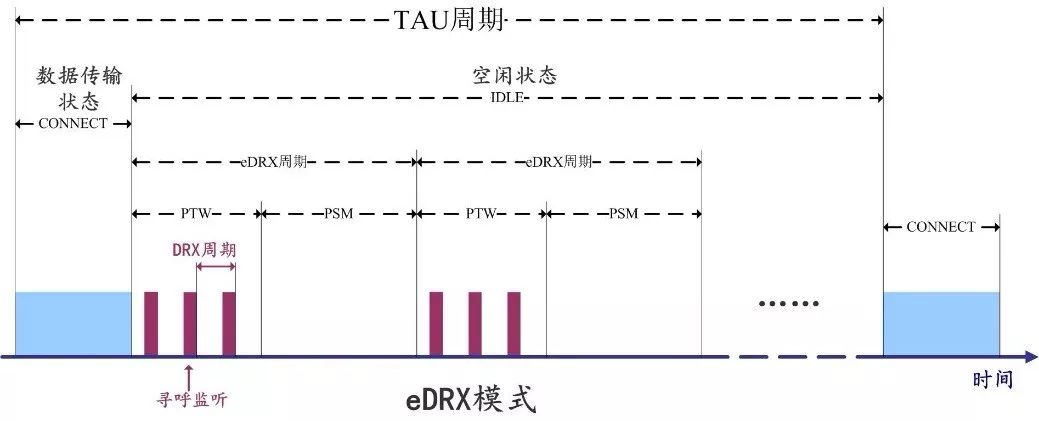
In eDRX mode, the way the network and terminal establish communication is the same: the terminal actively connects to the network; the terminal accepts the network’s paging within each eDRX cycle’s PTW.
In a TAU, the minimum eDRX cycle is 20.48 seconds, and the maximum cycle is 2.91 hours.
In eDRX, the minimum PTW cycle is 2.56 seconds, and the maximum cycle is 40.96 seconds.
In PTW, the minimum DRX cycle is 1.28 seconds, and the maximum cycle is 10.24 seconds.
Overall, under consistent TAU conditions, the eDRX mode has a higher distribution density of idle states compared to the PSM mode, and the terminal’s response to paging is more timely. eDRX mode is suitable for business applications with relatively high demands for downlink data transmission, but allows for some delay in terminal message reception (for example, cloud needs to periodically perform configuration management and log collection on terminals). Due to technical differences, eDRX mode is generally more power-consuming than PSM mode.
4. Simplifying Terminals to Achieve Low Costs
For applications that do not have high requirements for data transmission quality, NB-IoT has low-speed, low-bandwidth, non-real-time network characteristics. These characteristics mean that NB-IoT terminals do not need to be as complex as personal user terminals; simple structures and simplified module circuits can still meet the needs of IoT communication.
NB-IoT adopts a half-duplex communication mode, where terminals cannot send or receive signal data simultaneously. Compared to full-duplex terminals, this reduces the configuration of components and saves costs.
The low-speed data flow of services means that communication modules do not need to be configured with large-capacity caches. Low bandwidth reduces the requirements for equalization algorithms and the performance requirements for equalizers (equalizers are mainly used to calculate and offset wireless channel interference).
The NB-IoT communication protocol stack is designed based on LTE but systematically simplifies the protocol stack, allowing communication units to use low-cost dedicated integrated circuits instead of high-cost general-purpose computing chips to achieve the functions after protocol simplification. This can also reduce the overall power consumption of communication units and extend battery life.
5. Simplification of Business in the Core Network
In the core network of NB-IoT (EPC – Evolved Packet Core, i.e., 4G core network), two optimization schemes are defined for the demand characteristics of IoT business:
CIoT EPS User Plane Function Optimization
CIoT EPS Control Plane Function Optimization
(1) User Plane Function Optimization
The “User Plane Function Optimization” is not much different from the original LTE business; its main feature is the introduction of the RRC (Radio Resource Control) “Suspend/Resume” process, which reduces the signaling overhead of terminals repeatedly accessing the network.
When there is no data flow between the terminal and the network, the network places the terminal in a suspended state (Suspend), but retains the original connection configuration data between the terminal and the network.
When the terminal initiates business again, the original configuration data can immediately restore the communication connection (Resume), thus eliminating the need to re-perform RRC reconfiguration, security verification, and other processes, reducing the signaling interaction on the wireless air interface.
(2) Control Plane Function Optimization
The “Control Plane Function Optimization” includes two implementation methods (message transmission paths). Through these two methods, terminals do not have to establish business bearer with the network on the wireless air interface, allowing business data to be directly transmitted to the network.
Note: One of the characteristics of communication systems is the separation of control and bearer (business). Intuitively, this means that the control messages for business (establishing business, releasing business, modifying business) and the business data itself are not transmitted mixed on the same link. The control plane function optimization of NB-IoT simplifies this conventional information business architecture.
The two implementation methods of the CP mode, i.e., the two data transmission paths:
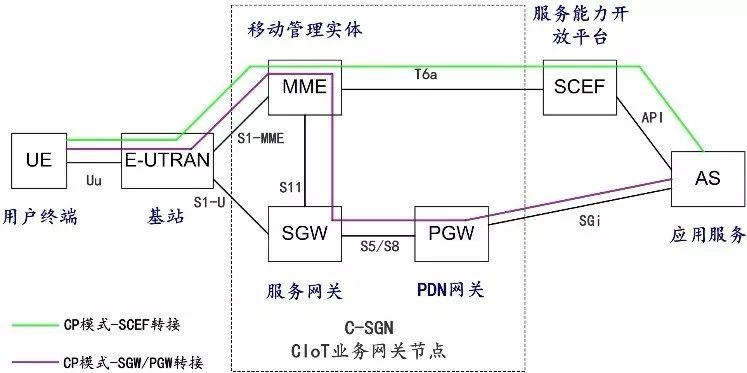
A. Within the core network, the MME and SCEF network elements are responsible for the transfer of business data
In this method, NB-IoT introduces a new network element: SCEF (Service Capability Exposure Function). The IoT terminal receives or sends business data through the wireless signaling link, not the wireless business link.
When the terminal needs to upload data, the business data is carried by wireless signaling messages and directly transmitted to the core network element MME (Mobility Management Entity, a mobility management entity in the 4G core network), which forwards it to the CIoT service platform (CIoT Services, also known as AP – Application Services) through the newly added SCEF network element. The direction of cloud sending business data to the terminal is exactly the opposite of the upload direction.
Path: UE (terminal) – MME – SCEF – CIoT Services
B. Within the core network, business data interacts with the business side through MME
In this method, the terminal also sends and receives business data via wireless signaling links. For the uploading of business data, the MME device sends the terminal’s business data to the business side network element SGW, which then enters the internet platform through PGW; for downlink business data, it is transmitted from SGW to MME and then sent to the terminal via wireless signaling messages. The paths for uploading and downloading business data are also consistent.
Path: UE (terminal) – MME – SGW – PGW – CIoT Services
According to traditional processes (including user plane optimization schemes), terminals need to first establish SRB (Signaling Radio Bearer) and then establish DRB (Data Radio Bearer) to transmit data over the wireless channel. However, using the control plane optimization scheme (CP mode), only establishing SRB is needed to achieve the reception and transmission of business data.
(3) Summary of Functional Optimization Modes
The CP mode draws on some design ideas from short-range communication, making it very suitable for low-frequency, small data packet uploading businesses, similar to SMS services. However, the bandwidth of the “signaling plane” in the network is limited, so the CP mode is not suitable for transmitting larger business data packets. The UP mode can meet the transmission of large data businesses.
Whether in the UP mode or CP mode, they essentially simplify the wireless communication process, saving the communication computation and energy consumption of terminals, and improving data transmission efficiency.
6. Mobility Management in Connection State
Initially, the specifications for NB-IoT were designed for static application scenarios (such as smart metering), so in the Rel-13 version (June 2016), it did not support mobility management in the connection state, i.e., it did not support “wireless handover.” In the subsequent Rel-14 version, NB-IoT will support handover between base station cells to ensure the continuity of services in a mobile state.
4. Summary of the Technical Characteristics of NB-IoT
From the characteristics of NB-IoT, it can be seen that it enhances communication coverage depth through “signal enhancement” and “paging optimization.” It mainly addresses the terminal’s requirements for low energy consumption and low cost through three aspects:
1. Introduced low-power “sleep” modes (PSM, eDRX);
2. Reduced requirements for communication quality, simplified terminal design (half-duplex mode, protocol stack simplification, etc.);
3. Simplified processes through two functional optimization modes (CP mode, UP mode), reducing interaction between terminals and networks.
These “optimization” designs for wide-area mobile communication technology make NB-IoT more suitable for certain IoT scenario applications, specifically LPWA (Low Power Wide Area) type applications. Moreover, by introducing sleep modes and reducing communication quality requirements (mainly real-time requirements), NB-IoT base stations can connect to more terminals (carrying LPWA businesses) compared to traditional base stations.
Terminals adopting NB-IoT can meet low-power demands for high-density deployment and low-frequency data collection applications (including fixed-location metering, warehousing and logistics management, information collection from urban public facilities, etc.), or for low-density deployment and long-distance communication connection applications (including agricultural monitoring, geological and hydrological monitoring, etc.).
Of course, as an LPWAN technology, NB-IoT has its inherent limitations; it is clearly not suitable for businesses requiring low latency and high reliability (such as vehicle networking, remote medical care), and medium-demand businesses (such as smart wearables, smart homes) may also find it somewhat “challenging.”
In the IoT technology ecosystem, no single communication access technology can “dominate” all application scenarios; various access technologies have a complementary effect, and NB-IoT can occupy a place in the IoT field due to its technical characteristics.

Previous Hot Articles (Click on the article title to read directly):
-
“How Difficult is It to Make Smart Locks on Shared Bicycles?”
-
“Cognitive Computing, Blockchain IoT, IoT Security… Those Who Understand Will Control the Future”
-
“[Heavy Release] 2017-2018 China IoT Industry Panorama Report – The Deep Transformation of the Industry by IoT Has Begun”
-
“[Heavy] IoT Industry Panorama Report, Leading the Domestic IoT Industry Two-Dimensional Perspective Panorama”
-
“A Cartoon Explains: Besides WiFi and Bluetooth, What Can the Recently Popular NB-IoT Do?”
-
“A Cartoon Explains: What is LoRa, Which Everyone is Talking About Behind NB-IoT?”
